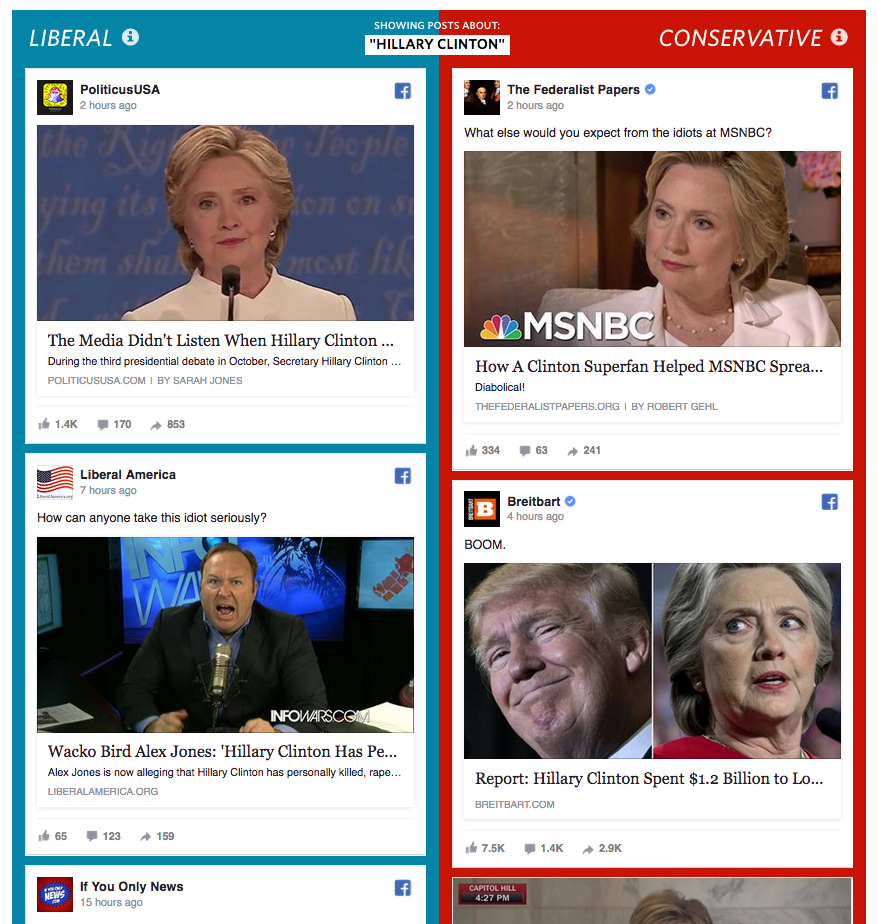 Imagine you’re on a busy city street where everybody who disagrees with you disappears.
Imagine you’re on a busy city street where everybody who disagrees with you disappears.
We have that city now. It’s called media—especially the social kind.
You can see how this works on Wall Street Journal‘s Blue Feed, Red Feed page. Here’s a screen shot of the feed for “Hillary Clinton” (one among eight polarized topics):

Both invisible to the other.
We didn’t have that in the old print and broadcast worlds, and still don’t, where they persist. (For example, on news stands, or when you hit SCAN on a car radio.)
But we have it in digital media.
Here’s another difference: a lot of the stuff that gets shared is outright fake. There’s a lot of concern about that right now:

Why? Well, there’s a business in it. More eyeballs, more advertising, more money, for more eyeballs for more advertising. And so on.
Those ads are aimed by tracking beacons planted in your phones and browsers, feeding data about your interests, likes and dislikes to robot brains that work as hard as they can to know you and keep feeding you more stuff that stokes your prejudices. Fake or not, what you’ll see is stuff you are likely to share with others who do the same. This business that pays for this is called “adtech,” also known as “interest based” or “interactive” advertising. But those are euphemisms. Its science is all about stalking. They can plausibly deny it’s personal. But it is.
The “social” idea is “markets as conversations” (a personal nightmare for me, gotta say). The business idea is to drag as many eyeballs as possible across ads that are aimed by the same kinds of creepy systems. The latter funds the former.
Rather than unpack that, I’ll leave that up to the rest of ya’ll, with a few links:
I want all the help I can get unpacking this, because I’m writing about it in a longer form than I’m indulging in here. Thanks.
Save
Leave a Reply